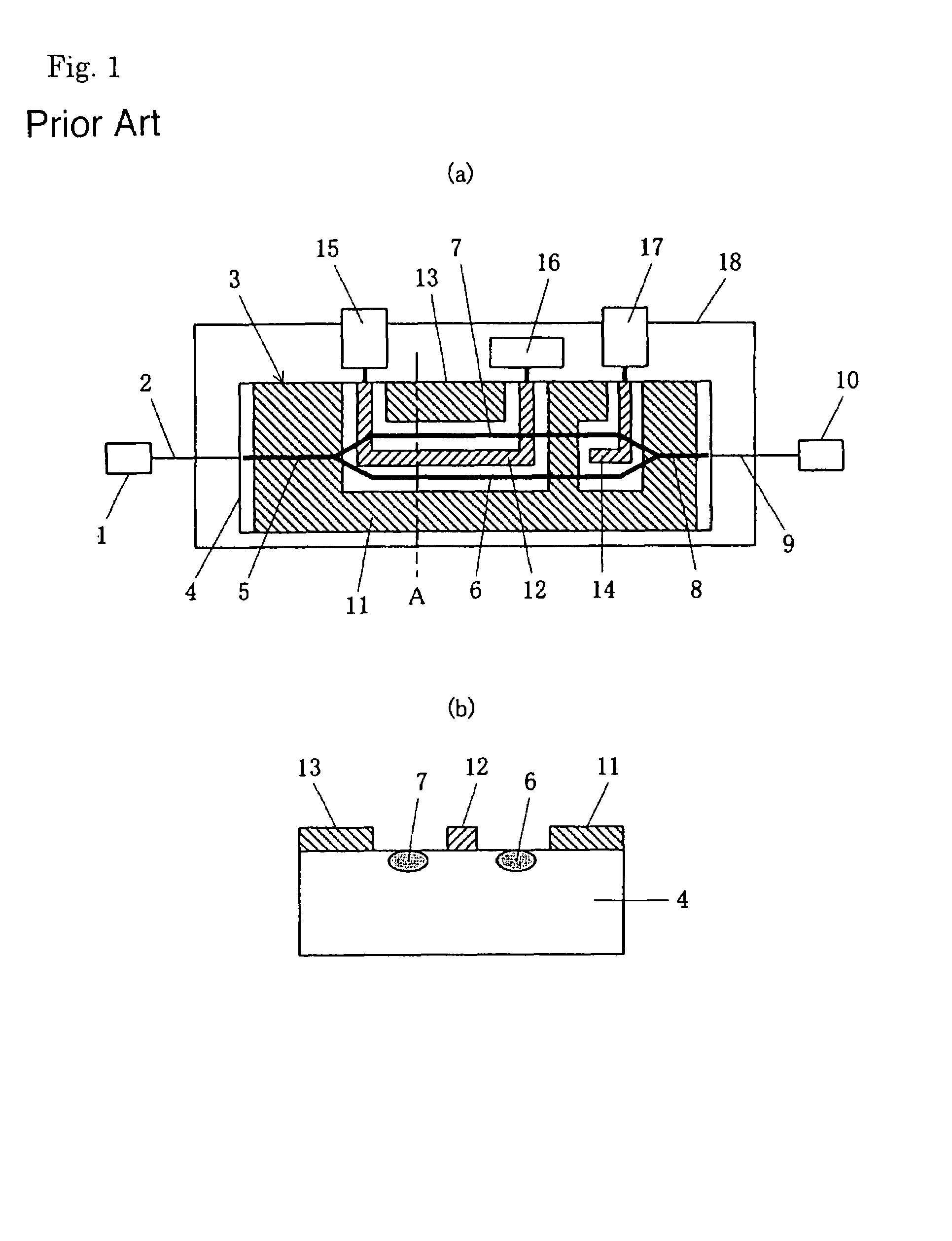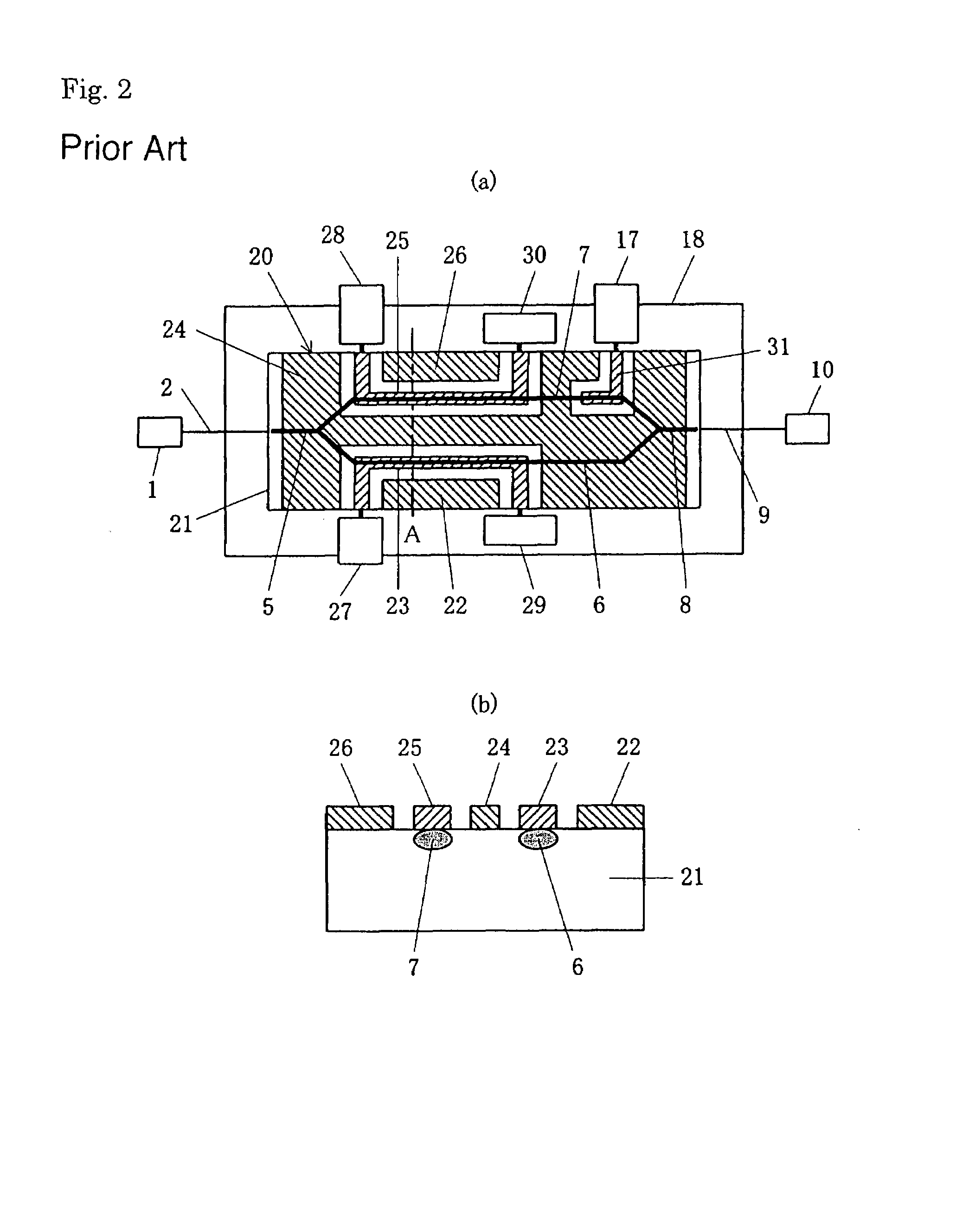Optical modulation element module
a technology module, which is applied in the field of optical modulation element module, can solve the problems of light dispersion in a fiber, higher driving voltage, and low modulation efficiency, and achieve the effects of reducing the line impedance of the modulation electrode, widening the frequency response properties, and facilitating the acquisition of broader band components
- Summary
- Abstract
- Description
- Claims
- Application Information
AI Technical Summary
Benefits of technology
Problems solved by technology
Method used
Image
Examples
Embodiment Construction
[0061]Hereinafter, an optical modulation element module according to an embodiment of the invention will be described in detail.
[0062]FIG. 4 is a block diagram schematically showing an optical modulation element module according to the embodiment of the invention.
[0063]As shown in FIG. 4, a modulation signal input unit 56 for inputting a modulation signal, a transformer branching unit 57 for dividing the modulation signal into two signals, an MZ type optical modulation element 50 which uses electro-optical effect, and optical input and output units such as optical fibers, and so on are integrated to be placed in a metal case 51 as a single package.
[0064]The modulation signal inputted in the modulation signal input unit 56 is divided into two signals by the transformer branching unit 57 in a modulator which is a transformer type branching element to feed powers to the modulation electrodes of the optical modulation element 50. On the other hand, a light component outputted from an op...
PUM
| Property | Measurement | Unit |
|---|---|---|
| impedance | aaaaa | aaaaa |
| line impedance | aaaaa | aaaaa |
| output impedance | aaaaa | aaaaa |
Abstract
Description
Claims
Application Information
 Login to View More
Login to View More - R&D
- Intellectual Property
- Life Sciences
- Materials
- Tech Scout
- Unparalleled Data Quality
- Higher Quality Content
- 60% Fewer Hallucinations
Browse by: Latest US Patents, China's latest patents, Technical Efficacy Thesaurus, Application Domain, Technology Topic, Popular Technical Reports.
© 2025 PatSnap. All rights reserved.Legal|Privacy policy|Modern Slavery Act Transparency Statement|Sitemap|About US| Contact US: help@patsnap.com



